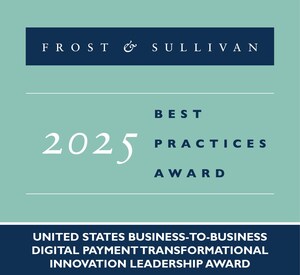Ethernet to Tap New Synergies for Connected Cars, Finds Frost & Sullivan
Ethernet could be catalyst for bringing the automotive industry a step closer to connected vehicles
LONDON, July 25, 2013 /PRNewswire/ -- The need to integrate multiple consumer electronic devices into the car offering connected services and maintaining brand identity has led to a situation where original equipment manufacturers (OEMs) are shifting toward higher connectivity options, which could power prioritised and personalised services, catering to varied consumer needs. With the paradigm shift toward connected cars and associated services such as automotive-app stores and connected location based services, there is an ever-increasing need for higher data transfer bandwidths. Ethernet could serve as the backbone to the electronic architecture connecting domains and sub networks that require higher bandwidth and also cater to consumers' need for connectivity.
Frost & Sullivan (www.automotive.frost.com) estimates that the total number of Ethernet ports globally will reach 300 million by 2020. The number of nodes or ports is expected to range from more than 100 in luxury cars, 50–60 in mass market segment cars, and less than 10 nodes in entry level cars by 2020.
"Ethernet could be the catalyst for bringing the automotive industry a step closer to connected vehicles," says Frost & Sullivan Senior Research Analyst, Divya Krishnamurthy. "With its capability to simplify the networking architecture, higher uptake rates are expected in the near future."
The growth of electronics and growing number of control units has led to a complex EE architecture. Connectivity of sub networks and communication of control units require higher bandwidths. Car networks such as LIN, CAN, and FlexRay are not specified to cover the increasing demands for bandwidth and scalability.
The bandwidth requirement for in-vehicle electronic applications, such as camera-assisted parking with advanced driver assistance systems (ADAS), lane departure warning systems, collision avoidance systems, and traffic light recognition is higher, in the range over 100Mbps. The number of nodes to be connected therefore is also higher. Most importantly, proven IP-based Ethernet technology enables OEMs to use a single-network platform by significantly reducing the connectivity cost and cabling weight. It is scalable and flexible enough to be used in multiple vehicle segments.
"OEMs are now working to bring in Ethernet into their future models that will fulfil all kinds of telematics and infotainment demands of end users," says Ms. Krishnamurthy. "OEMs can benefit from the use of Ethernet to reduce connectivity cost and weight due to lighter cabling leading to better fuel economy."
BMW AG, in partnership with Freescale Semiconductor, Inc., will be the first OEM to commercialise the Ethernet for a 360-degree camera parking assist system for its X5, later in 2013. The German carmaker is expected to offer the same for other models in the future. Hyundai Motor Company is using Broadcom Corporation's BroadR-Reach Ethernet technology to offer next-gen connected infotainment systems. Fiat Group Automobiles S.P.A has also signed a joint venture with Continental AG for its 500L model to bring in the Continental Infotainment System, which can be used as an advanced multimedia system.
"It is also indicative, that OEMs such as BMW, Hyundai, Jaguar Land Rover Limited, General Motors, American Honda Motor Co., Inc., and PSA Peugeot Citroen are also part of the open alliance (One-Pair Ether-Net), a special interest group (SIG) to use Ethernet as a standard solution for infotainment and telematics," concludes Ms. Krishnamurthy.
Frost & Sullivan is currently working on a study focussing on Market Trends and Technical Developments Surrounding the Ethernet and In-vehicle Connectivity in Europe and North America. If you are interested in any further information on the research or would like to speak to Miss Krishnamurthy directly, please send an email to Katja Feick, Corporate Communications, at [email protected], with your full contact details.
About Frost & Sullivan
Frost & Sullivan, the Growth Partnership Company, works in collaboration with clients to leverage visionary innovation that addresses the global challenges and related growth opportunities that will make or break today's market participants.
Our "Growth Partnership" supports clients by addressing these opportunities and incorporating two key elements driving visionary innovation: The Integrated Value Proposition and The Partnership Infrastructure.
- The Integrated Value Proposition provides support to our clients throughout all phases of their journey to visionary innovation including: research, analysis, strategy, vision, innovation and implementation.
- The Partnership Infrastructure is entirely unique as it constructs the foundation upon which visionary innovation becomes possible. This includes our 360 degree research, comprehensive industry coverage, career best practices as well as our global footprint of more than 40 offices.
For more than 50 years, we have been developing growth strategies for the global 1000, emerging businesses, the public sector and the investment community. Is your organization prepared for the next profound wave of industry convergence, disruptive technologies, increasing competitive intensity, Mega Trends, breakthrough best practices, changing customer dynamics and emerging economies?
Contact Us: Start the discussion
Join Us: Join our community
Subscribe: Newsletter on "the next big thing"
Register: Gain access to visionary innovation
Contact:
Katja Feick
Corporate Communications – Europe
P: +49 (0) 69 7703343
E: [email protected]
http://www.frost.com
Twitter: @Frost_Sullivan or @FS_Automotive
Facebook: FrostandSullivan
Join our Forum on LinkedIn: Future of Mobility
SOURCE Frost & Sullivan
WANT YOUR COMPANY'S NEWS FEATURED ON PRNEWSWIRE.COM?
Newsrooms &
Influencers
Digital Media
Outlets
Journalists
Opted In






Share this article